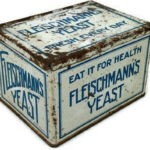Savour the syntax, the sentences, the syllables in this advertisement for Heinz Tomato Juice

We can assume that the copywriter had fun writing this Heinz Tomato Juice advertisement that appeared in The American Home magazine, June 1939. Enjoy the rhetoric, the imagery, the symbolism and the incongruities.
Peak of all Night Caps!
Before a Pleasant Journey Through Slumberland, Quaff Heinz Tomato Juice—Great Evening Ender, Great Day Starter
Tomato juice was first served in 1917
as a tomato juice cocktail
It is the base for the Bloody Mary cocktail but in Canada the tomato juice is also blended with clam juice and the result is a Bloody Caesar which was created, apparently in 1969, by a Calgary bartender who wanted to commemorate the inauguration of an Italian restaurant.
Walter Chell took his inspiration from the Bloody Mary but since clam sauce was on the menu, he spent a few weeks crushing some of these molluscs, until he managed to achieve the perfect balance with the tomato juice.
Canada’s Caesar recipe calls for the rim of a tall glass to be coated with celery salt before being filled with the Clamato Juice. It is garnished with a lime or lemon wedge and a cucumber stalk of celery. The drink is often spiked with vodka.
More Bloody Caesars are sold in Canada than any other cocktail. It’s usually ordered simply as a “Caesar.” It is often titled Canada’s National Cocktail.
In Canada and Mexico, tomato juice is commonly mixed with beer. In Canada the concoction is known as Calgary Red-Eye, and in Mexico it is Cerveza preparada.
In 2013 H.J. Heinz Co. announced the closing of closed three plants in North America, including Florence, South Carolina (200 employees); Pocatello, Idaho (410 employees); and, Leamington, Ontario in Canada (740 employees).
In a statement, Heinz said it came to its decision “after an extensive review of our company’s North American supply chain footprint, capabilities, and capacity utilization.”
“We reached this decision after thoroughly exploring extensive alternatives and options. Heinz fully appreciates and regrets the impact our decision will have on employees and the communities in which these factories are located,” Michael Mullen, senior vice president of corporate and government affairs, said in a news release. “We appreciate the many contributions these employees have made to Heinz and we are committed to treating all employees with the utmost respect and dignity.”
In August 2013, H.J. Heinz Co. had eliminated 600 office jobs across the U.S. and in Canada, including 350 in Pittsburgh, nearly a third of its operation there.
Heinz sold its processing plant in Leamington, Ont., in 2014 and moved its ketchup operations to the U.S. but the plant didn’t close; a Canadian tomato juice law helped save Heinz’s plant in Leamington, Ont. from really closing.
In December 2015, French’s ketchup — owned by U.S. food company McCormick — launched in Canada, pledging to make ketchup with Leamington tomatoes. The move led to prolonged free publicity for the brand — the kind that money can’t buy.
According to market research company Euromonitor, the brand quickly gained ground, and snagged 5.1 per cent of Canadian retail ketchup sales by 2018. It ranks as Heinz’s biggest competitor.
Heinz ketchup — owned by U.S. food company Kraft Heinz — still held 77.5 per cent of the market share in 2018. But that’s a 6.2 per cent drop from 2015.

Read HERE how a Canadian tomato juice law helped save Heinz’s plant in Leamington, Ont. from closing








